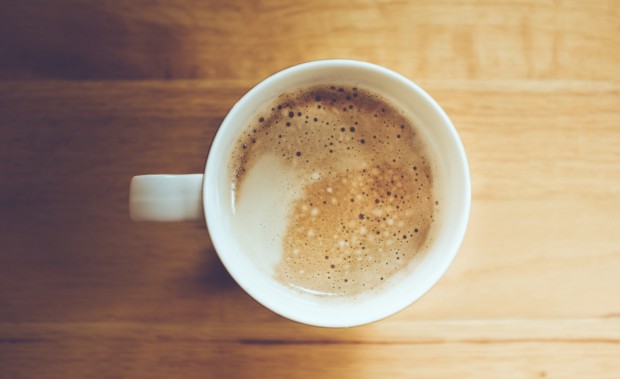
Total U.S. coffee consumption is pretty much holding steady, despite the proliferation of coffee shops. 2013 Creative Commons photo by Basheer Tome.
Despite the growth of the U.S. retail coffee shop segment over the past 16 years, per capita coffee consumption has remained largely unchanged during that period, according to the latest series of Gallup polls.
The organization polled just over 1,000 U.S. adults by phone earlier this month, following up on similar surveys in 1999 and 2012. It found some remarkable consistencies in each of those surveys related to daily consumption: 64 percent of people said they drank at least one cup of coffee per day in 2015, compared to 64 percent in 2012 and 63 percent in 1999. These numbers are actually higher than those compiled in the most recent consumer trends report from the National Coffee Association, which said that 59 percent of Americans in 2015 are consuming at least one cup per day, compared to 61 percent in 2014 and 2013.
Respondents in the 2015 Gallup survey also reported an average of 2.7 cups per day in 2015, compared to 2.5 in 2012 and 2.9 in 1999. Said Gallup, “More specifically, 26 percent of American adults say they drink one cup of coffee on an average day, 19 percent drink two, 8 percent drink three, and 11 percent drink four or more. The remaining 36 percent drink none.”
These consistent trends in daily consumption have come at a time when coffee shops, particularly large chains such as Starbucks and Dunkin’ Donuts, have represented one of the restaurant industry’s leading retail growth segments.
Gallup made no attempt to measure quality, drink type or cost of the coffee being consumed, nor did it measure home vs. retail consumption, although the group did say that coffee shops and “advances in home brewing machines have enabled consumers to enjoy premium coffee almost anytime, anywhere.”
Much of the Gallup study focused on perceptions of caffeine addiction, as well as some relatively new and emerging research surrounding the potential health benefits of coffee consumption. This may be in part because consumption numbers that are largely unchanged over the past 16 years make for pretty boring headlines. Whether you prefer to call it holding strong or flatlining, daily American coffee consumption is fairly predictable these days. Gallup did offer some useful demographic data:
Coffee drinkers tend to be older, with 74 percent of adults aged 55 and older consuming it daily, versus 50 percent of those aged 18 to 34. Among coffee drinkers, those younger than 35 tend to drink fewer cups per day on average (1.8) than those aged 35 and older, who consume roughly three cups per day. Fewer lower-income than higher-income Americans drink coffee, but lower-income coffee drinkers consume more cups per day than higher-income coffee drinkers (3.8 vs. 2.4 cups, on average).
Additionally, whites tend to drink more coffee than nonwhites, and those living in the East and Midwest drink a bit more than those in the West, but there are minimal differences in consumption by gender, education and employment status.
Nick Brown
Nick Brown is the editor of Daily Coffee News by Roast Magazine.






Comment